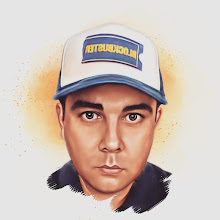 "Ghost Catchers" ** (out of ****)
"Ghost Catchers" ** (out of ****)Olsen & Johnson prove they ain't 'fraid of no ghost in the comedy / horror picture "Ghost Catchers" (1944).
"Ghost Catchers" was the second to last movie the comedy team of Ole Olsen and Chic Johnson starred in and of all the comedies featuring the team this may, unfortunately, be the worst. That is saying quite a lot. Olsen & Johnson are not well remembered today. A majority of audiences may find their humor dated and corny. It isn't really a fair assessment of the team and their work should not be forgotten but it says something that the studio that released the team's last movies together, Universal, sees no market to release their comedies on DVD. Unlike other forgotten comedians and comedy teams, Olsen & Johnson have not yet been "rediscovered" by younger movie fans.
Watching a comedy like "The Ghost Catchers" isn't going to help matters. Olsen & Johnson were a comedy team that thrived on chaos. They achieved their greatest success on the stage and in nightclub appearances, where they were given more room to improvise and could "feed" off an audience. Think Martin & Lewis. Movies were too restrictive for them. "Ghost Catchers", like a few of their other comedies, attempts to present itself as a revue. There is comedy, romance, singing and dance and in the case of this movie, scares. The problem is Olsen & Johnson. Their comedy doesn't lend itself easily to a genre. As such it doesn't compliment the horror genre.
As I have written repeatedly in order for comedy / horror to work you must think of it as two movies in one. You must take the horror portion of your story serious and create a good background story, atmosphere and genuine scares. When you do that the humor should naturally come from the situations created. The characters should be placed in the well known, cliche horror movie scenarios and their reactions should make the audience laugh. It might sound difficult to some readers but prime examples include "Abbott & Costello Meet Frankenstein" (1948) and Bob Hope in "The Cat & the Canary" (1939).
None of that happens in "Ghost Catchers" because that's not what Olsen & Johnson do. The movie has the team appear as "themselves", nightclub performers who engage in wild antics centered on heavy audience participation. That makes "Ghost Catchers" half Olsen & Johnson revue and half comedy / horror instead of half comedy, half horror movie.
The plot is supposed to revolve around Colonel Marshall (Walter Catlett) and his two daughters; Melinda (Gloria Jean) and Susanna (Martha O' Driscoll) renting out a New York apartment, which may be haunted by a ghost from 1900. The two women are singers are are getting ready to make their debut at Carnegie Hall. This actually has nothing to do with the rest of the picture other than provide an explanation for more songs to be sung in the movie. The family is frightened and in their despair seek help at a next door nightclub where the headliners are Olsen & Johnson.
At first no one believes the family's story of a ghost haunting a house but, against their better judgement Olsen & Johnson decided to check on their neighbors. They immediately become scared themselves upon entering the house as soft-shoe tap dancing is heard and a horse galloping. The sequence is actually the best in the movie as it is the only time "Ghost Catchers" actually places the comedy team in the confines of the horror genre and builds laughs in the process.
As the two men begin to get ready for bed Mr. Johnson's clothes are being removed for him by a ghost. He is too involved in his conversation with Mr. Olsen to notice. The boys even mention how the set-up is similar to an Abbott & Costello movie, "Hold That Ghost" (1941), and reference a famous comedy routine where a candle moves by itself gliding side to side. As they say it, their candle begins to do it.
This gag, along with an opening credit animated sequence "borrowed" from "Hold That Ghost", does a few things. One, it makes us think of "Hold That Ghost", which is a far superior comedy. Two it makes for a comparison between the two comedy teams. Many have felt Olsen & Johnson were a low rent Abbott & Costello due to the physical characteristics shared by both teams; one short man, one tall man. One slender, one, rotund we'll say. And third, it brings into question what does "Ghost Catchers" hope to accomplish?
Ever since the team filmed their most popular screen comedy, "Hellzapoppin'" (1941), based on their successful Broadway show, practically every movie was the same, regardless of the "plot". They were all musical-comedy revues which often reduced Olsen & Johnson's screen time to allow for musical acts and sometimes spotlight other comedians. They are a bit more involved in this movie but as I say, it isn't really a comedy / horror movie. What then was the point of the movie?
Olsen & Johnson can be quite funny, in the right movie, "Hellzapoppin'" is an example, but when the team does do genre spoofs, that isn't their strength. Their strength is in allowing them to goof around and make wise-cracks and sexual innuendos. A specific genre will only constrict them. They can't play by the rules. Could "Ghost Catchers" have been a good comedy? Sure. It would require a lot of re-writing and casting a different comedy team though.
"Ghost Catchers" does have a laugh or two but this doesn't feel like a "complete" movie. Yes, we see the boys engage in their wild brand of humor but it doesn't compliment or advance the movie's plot. If you are interested in discovering the work of Olsen & Johnson, don't start here.



























